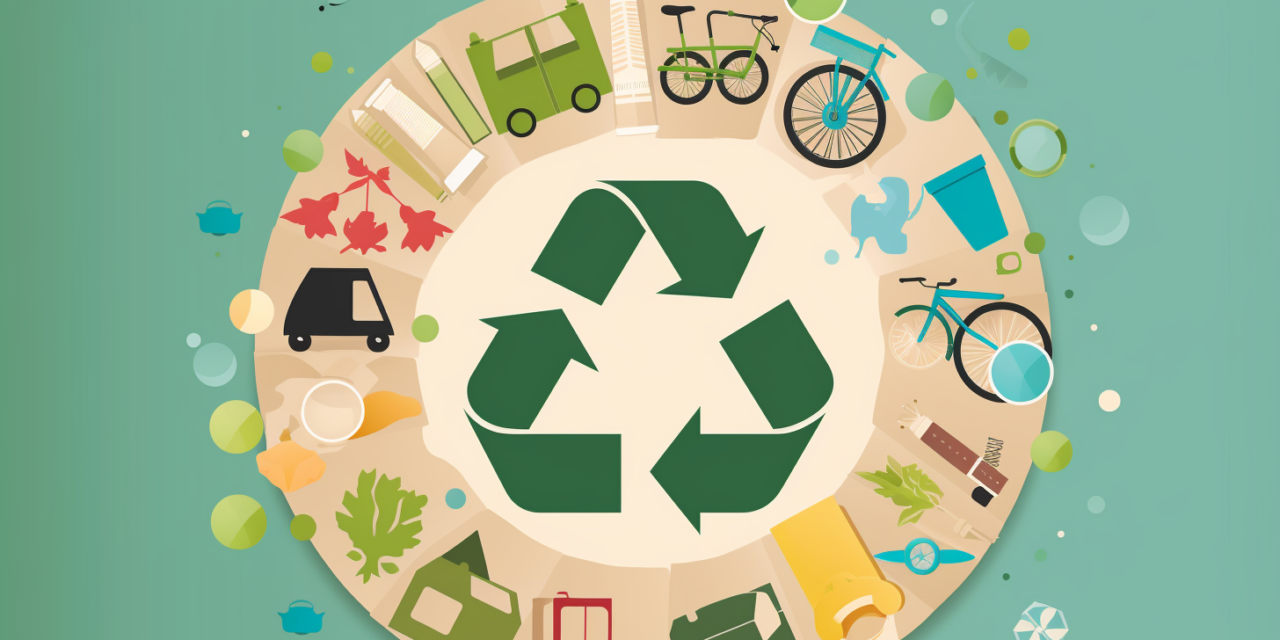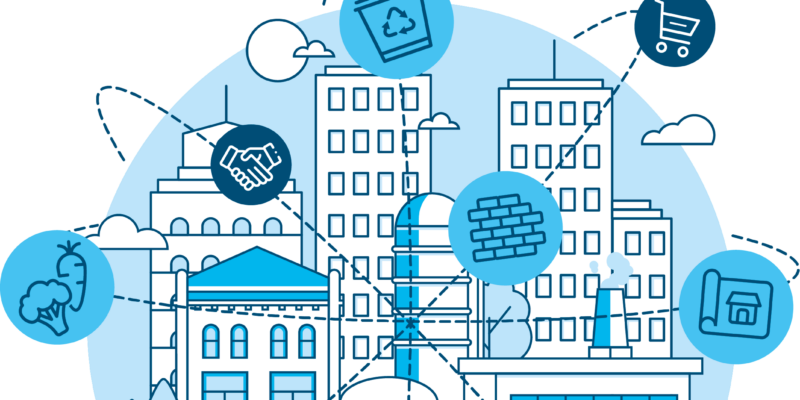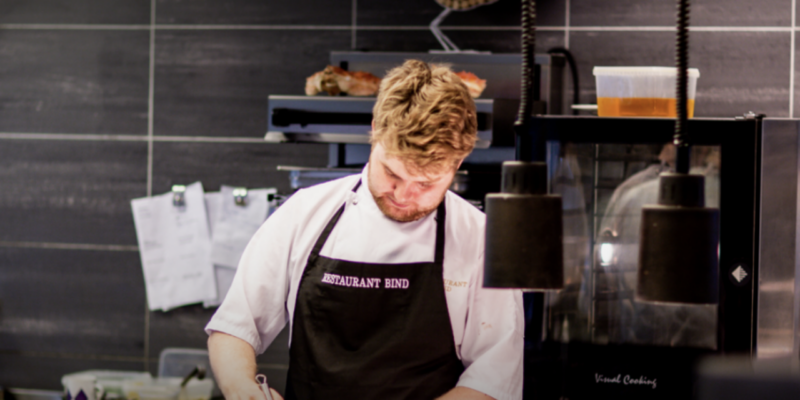Circular revenue models as an accelerator for the circular economy

In addition to circular products, there are also circular revenue models. These help to encourage producers to act in a circular way. These revenue models are a convenient tool, but by no means an end in themselves. They are not suitable for every product group or organisation. But, when they are, they can be just the right incentive to give the circular economy a boost.
Circular revenue models
In a circular revenue model, end users do not buy products, they pay for their services.
We call this product-as-a-service.
A circular revenue model encourages producers to design and produce circularly.
After all, if products remain yours, you want them to last as long as possible.
That way, functionality comes ahead of price.
Types of circular revenue model
There are several different circular revenue models. These are the four most common:
- Pay per use: you pay each time you use the product. A shared car is a good example, where you only pay for the journey that you make.
- Rental: if you can’t properly determine ‘use’ (how long, how much), renting is a more logical choice. An example would be a ladder from a hardware shop.
- Buy-back: in the case of rental, the producer pre-finances the product itself. In some cases, a producer cannot or will not do this. In that case, a buy-back is an option. The user buys the product, with a guarantee that the producer will buy it back at some point. This happens with carpet tiles, for example.
- Lease: if a user cannot or does not want to finance a purchase themselves, leasing with an external finance provider is an option. This is often seen in forklift trucks in the commercial market, for example.
In practice, we see the term product-as-a-service used as a generic term for pay per use, rental and leasing. Buy-back is seen as a separate revenue model.
Circular revenue models are often more expensive
In theory, circular revenue models sound ideal. But why hasn’t the circular revenue model been adopted everywhere? ‘The uncomfortable truth is that buying a product is still often cheaper than a rental or lease,’ argues Marijn Polet, expert on circular revenue models at Copper8, a sustainability consultancy.
‘Due to the fiscal rules that we have, a circular model has a higher risk profile than traditional sales models. Consequently, circular models are often less financially attractive for producers. That leads to higher product prices for consumers.’
Marijn Polet, expert on circular revenue models at Copper8
This is due to a number of different reasons:
- The product has to remain on the producer’s balance sheet. As a result, the producer needs more financing.
- Contracts are often more flexible, making the overall contract term, and thus the amortisation period, uncertain.
- The producer does not earn the revenue all at once, but spread out over a period of time, even though it has to arrange the pre-financing for the product in one go.
Another thing that a producer has to keep in mind is that it is not just supplying more products, but operating as a service organisation. It needs to redesign the business, which takes time and energy.
Argument in favour of a circular model: unburdening
For the time being at least, businesses initiating a circular revenue model are doing so for reasons other than financial gain. ‘We see that as-a-service models work precisely because of their unburdening nature,’ explains Wouter de Wolf, marketing manager at Signify – known for its light-as-a-service model.
‘Customers want to feel unburdened. Sustainability plays a lesser role in this, although the higher sustainability performance may accelerate the model’s roll-out.’ A circular revenue model alone is not a guarantee of higher sustainability performance. ‘Importantly, it offers the right incentives to work more sustainably in the long term,’ explains Wouter.
Examples of circular revenue models for consumers include Auping – which leases beds through Bedzzzy – and Mud Jeans, which rents trousers.
Interest is growing in certain industries
Circular revenue models have benefits and drawbacks. The benefits do, however, seem to be slowly pulling ahead of the drawbacks as interest in circular models grows. Both from public and private parties.
‘At Signify, for example, we are currently seeing a strong increase in circular requests for street lighting,’ explains Wouter. ‘For some reason, these are mainly from Belgium at the moment. The Netherlands has been at the forefront in recent years, but we are now seeing demand increase in other countries as well.’
In the Netherlands, Schiphol Airport was one of the first parties to purchase light-as-a-service . Recent examples from other industries include:
- Rental of furniture for home office workstations for PwC employees
- Lease of furniture for the office of the Province of North Brabant
What to pay attention to as a client
Working with a circular revenue model not only impacts producers. Clients also need to take into account that procurement with a circular revenue model is different to the traditional approach.
- A circular revenue model is not suitable for every product group or organisation.
’Products with a service life of between three and fifteen years are best suited,’ explains Marijn. ‘Consider furniture, IT or lighting. A circular revenue model is also easier with movable goods. In the case of immovable goods, such as buildings, you quickly run into legal barriers relating to ownership.’ - You have to look at the costs differently.
Instead of investing once, with subsequent costs for energy or maintenance, you pay periodic service charges. This means that a circular revenue model over the entire service life is often more expensive. There are clients who opt for this, however. Wouter continues, ‘With a circular model, a client is unburdened. Sometimes that costs more, because an as-a-service model also buys off the risks.’ - You get a more comprehensive contract with different terms.
In the case of a circular revenue model, the overall solution is more complex. This is reflected in the contracts and conditions that come with it. What’s Wouter’s advice? ‘To shape this properly, you need to involve more people internally.’
Practical advice for clients
By choosing to procure with a circular revenue model, you can help to boost the transition to the circular economy. These three tips from Marijn and Wouter will help you find your way:
- Choose the circular revenue model that best matches your organisation and the product group in question.
Use the circular revenue model ladder to help you make the right decisions. Note that a circular revenue model is not always the most logical choice.
- Consider other ways of enabling circularity
Circular revenue models alone will not get us where we need to be. Think about what else you can do. Consider agreements on maintenance, repair and technical requirements to extend the service life of the product and allow it to be reused.
- Explicitly request an as-a-service model if that is what you want.
But remember – it is a means, not an end. It might not suit your organisation. In that case, seek alternatives to help you procure a product as circularly as possible. You can still take circular steps, even without as-a-service models (see tip 2)!
Want to know more about how to apply a circular revenue model? See the step-by-step plan for circular procurement.


